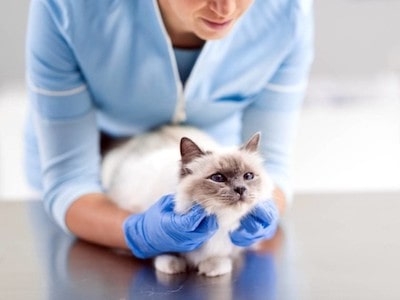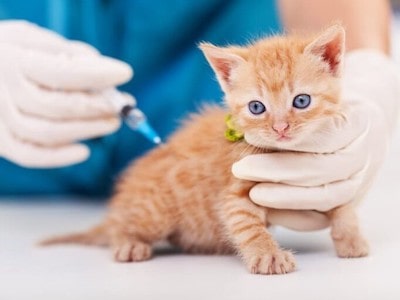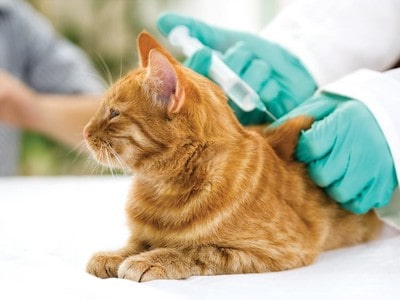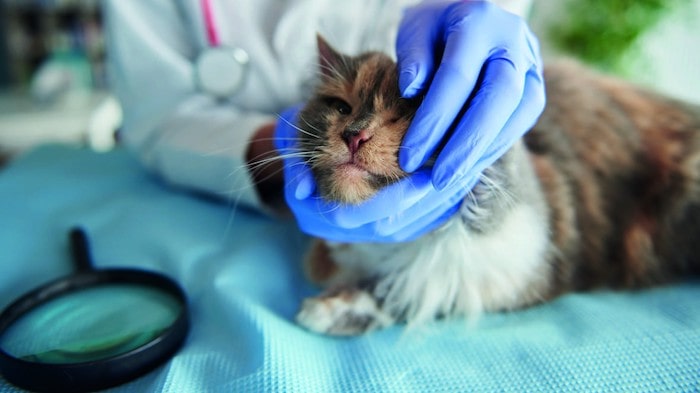As feline enthusiasts, we adore the playful antics, soft purrs, and gentle companionship that our beloved cats provide. However, just like humans, our feline friends are not immune to the occasional bout of illness.
One common ailment that often affects cats, particularly those living in multi-cat environments or shelters, is an upper respiratory infection (URI). These infections, akin to the common cold in humans, can cause discomfort, sneezing fits, and even serious health complications for our furry companions.
In this comprehensive guide, we will delve into the world of upper respiratory infections in cats. We will explore the causes, symptoms, diagnosis, treatment options, and preventive measures you can take to safeguard your feline friend’s well-being.
Whether you are a seasoned cat owner or a first-time cat parent, understanding these infections will equip you with the knowledge needed to recognize the signs and provide the best care for your beloved feline companion.
Join us as we embark on this enlightening journey, unraveling the mysteries of upper respiratory infections in cats and discovering how we can alleviate their discomfort and promote a healthy recovery.
By the end of this guide, you will be armed with the tools and insights to better navigate through this common feline health issue, ensuring a happier and healthier life for your feline companion. Let’s begin our exploration into the world of feline sniffles!
What are upper respiratory infections in cats and what causes them?
Upper respiratory infections (URIs) are infections that affect the upper airway of cats, which includes the nose, throat, and sinuses. They are similar to colds in humans, but they can be more serious and lead to complications such as pneumonia or eye ulcers.
The most common causes of URIs in cats are viruses and bacteria. The most common viruses are feline herpesvirus type-1 (FVR) and feline calicivirus (FCV), while the most common bacteria are Bordetella bronchiseptica (B. bronchiseptica) and Chlamydophila felis (C. felis). These pathogens can be spread through direct contact, such as grooming or sneezing, or through indirect contact, such as sharing food bowls or litter boxes.
Some cats may become carriers of these pathogens for life, meaning that they can infect other cats even if they do not show symptoms themselves. This is especially true for cats infected with herpesvirus, which can be reactivated by stress or other factors. Therefore, it is important to keep your cat’s environment clean and stress-free.
What are the signs and symptoms of URI in cats?
The signs and symptoms of URIs in cats may vary depending on the type and severity of the infection, but some common ones include:

- Sneezing
- Congestion
- Runny nose
- Cough
- Clear to colored nasal and eye discharge
- Gagging or drooling
- Fever
- Loss of or decreased appetite
- Nasal and oral ulcers
- Squinting or rubbing eyes
- Depression
- Lethargy
- Hoarse voice
Some cats may have mild symptoms that resolve on their own, while others may have severe symptoms that require veterinary attention. If your cat has any of these signs, you should monitor them closely and contact your veterinarian if they worsen or do not improve within a few days.
How are URI in cats diagnosed and treated?
To diagnose a URI in your cat, your veterinarian will examine your cat’s eyes, nose, mouth, and throat, and may take a swab sample to test for specific pathogens. They may also perform blood tests or x-rays to rule out other conditions or complications.
The treatment of URIs in cats depends on the cause and severity of the infection. In most cases, supportive care is enough to help your cat recover. This may include:
- Keeping your cat hydrated by providing fresh water or wet food
- Cleaning your cat’s eyes and nose with a warm damp cloth or saline solution
- Providing a humidifier or steamy bathroom to help clear the airways
- Isolating your cat from other cats to prevent spreading the infection
- Giving your cat a comfortable and quiet place to rest

In some cases, your veterinarian may prescribe medications to help your cat recover faster or prevent complications. These may include:
- Antibiotics to treat bacterial infections or secondary infections
- Antivirals to treat herpesvirus infections
- Anti-inflammatories to reduce swelling and pain
- Decongestants to relieve congestion
- Appetite stimulants to encourage eating
You should always follow your veterinarian’s instructions on how to give these medications to your cat, and never give human medications without consulting your veterinarian first.
How can you prevent URI in cats and protect your cat’s health?
The best way to prevent URIs in cats is to vaccinate your cat against the common viral causes of URIs: herpesvirus and calicivirus. These vaccines are usually given as part of the routine kitten vaccinations, and then as boosters every year or every few years depending on your veterinarian’s recommendation. Vaccines can reduce the risk of infection or make the symptoms milder if your cat does get infected.

Other ways to prevent URIs in cats include:
- Keeping your cat indoors or limiting their exposure to outdoor cats
- Avoiding overcrowded or stressful situations for your cat
- Cleaning and disinfecting your cat’s environment regularly
- Washing your hands and changing your clothes after handling other cats
- Quarantining new cats or sick cats until they are cleared by a veterinarian
- Feeding your cat a balanced and nutritious diet
- Providing your cat with regular check-ups and parasite control
FAQ
How do cats contract upper respiratory infections?
Cats can contract upper respiratory infections through close contact with infected cats, exposure to airborne viruses or bacteria, or sharing contaminated objects such as food bowls, litter boxes, or bedding. Crowded environments like shelters or multi-cat households are more prone to the spread of these infections.
Can upper respiratory infections in cats be treated?
Yes, upper respiratory infections in cats can be treated. Treatment may involve supportive care to manage symptoms such as nasal congestion and fever, antibiotics to combat bacterial infections, antiviral medications for viral infections, and sometimes eye drops for ocular symptoms. It’s important to consult a veterinarian for proper diagnosis and treatment recommendations.
Are there any complications associated with upper respiratory infections in cats?
In some cases, especially if left untreated or if the cat has a weakened immune system, upper respiratory infections in cats can lead to complications such as pneumonia, dehydration, chronic respiratory issues, or secondary bacterial infections. It’s crucial to seek veterinary care if your cat’s symptoms worsen or if they show signs of severe distress.
Can cats transmit upper respiratory infections to humans?
While upper respiratory infections in cats are primarily caused by feline-specific viruses and bacteria, there is a rare possibility of transmission to humans, particularly if the person has a compromised immune system. However, the risk is generally low, and practicing good hygiene, such as washing hands thoroughly after handling an infected cat, can minimize the chances of transmission.
Conclusion
Upper respiratory infections in cats can be a source of concern and discomfort for both feline companions and their human caretakers. However, armed with knowledge about the causes, symptoms, diagnosis, treatment, and prevention of these infections, we can provide the best possible care for our furry friends.
By recognizing the signs of a URI in cats and seeking prompt veterinary attention, we can help alleviate their discomfort and minimize the risk of complications. Understanding the importance of good hygiene, maintaining a clean living environment, and practicing preventive measures can significantly reduce the likelihood of our cats contracting these infections.
Remember, cats with a strong immune system and a healthy lifestyle are better equipped to fight off upper respiratory infections. Regular vaccinations, proper nutrition, stress reduction, and a loving environment can contribute to their overall well-being and resilience.






